2024 NFL Draft: Pick-by-pick analysis for Day 3, Rounds 6-7
- Round 1
- Rounds 2-3
- Rounds 4-5
- Rounds 6-7
The 2024 NFL Draft has entered its third day. Eric Edholm is offering analysis for every player chosen in the 6th and 7th rounds, detailed below.
NOTE: Only trades agreed to after Day 1 began are reflected below.
ROUND 6

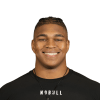
Rouse’s skills in run blocking surpass his pass protection abilities, yet the Sooners showed more confidence in him as a left tackle than they did in former five-star recruit Cayden Green the previous year. Rouse brings valuable experience to that position and has the perfect length for it. However, his playing experience is limited to the left tackle spot and he can be somewhat awkward in open areas.


Lee is a talented athlete with a practical, no-nonsense demeanor. However, his optimal position may be a subject of debate. He could possibly be most effective as a 5-technique, allowing him to engage tackles and create chances for his teammates, provided his average arm length doesn’t pose a problem.

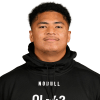
Laumea, who has displayed quality run-blocking skills and impressive athleticism in his roles as a right tackle and right guard, might benefit from a full-time shift to an inside position. This potential move could shield him from skilled pass rushers, particularly given his less-than-optimal length.

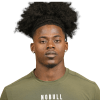
Dial, who possesses a commendable reach and has intercepted numerous passes over the past three years, potentially has the versatility to become a multifaceted player in the secondary, given his experience in diverse positions.

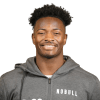
I’m a bit surprised the Chargers didn’t take a back before this, but Vidal has a chance to join the RB rotation for Jim Harbaugh. Vidal’s profile reads similarly to Blake Corum, so it’s easy to see why Harbaugh might view him favorably.
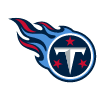
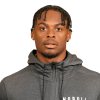
It felt like Jackson was among the leaders in Senior Bowl practice receptions. Interestingly, I felt he was underused at Tulane, as Jackson has good quickness to uncover and make people miss as a smaller-framed slot receiver. He and teammate Tyjae Spears are reunited in Nashville.


Muasau reminded me a bit of former Vikings LB Kentrell Brothers, a short but stout hitter and playmaker around the line of scrimmage whose coverage deficiencies are a bit worrisome.


His smaller frame might not have suited every team, but I believe Washington should have been drafted earlier. His speed makes him an excellent match for Miami, where he could ideally be the fourth or fifth receiver and pose a return threat.

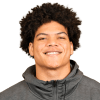
On the opposite end of the spectrum height-wise from Malik Washington is Wilson, who will immediately be among the tallest receivers in the NFL at 6-foot-7. He’s sort of a TE-WR tweener, lacking the speed of a wideout and the strength for a tight end, but you may call him a weapon — possibly in the red zone.


McClellan is a robust running back, notable for his toughness and exceptional ball security, having fumbled only once in nearly 400 touches during his college career. However, he is a one-dimensional runner on a team already well-stocked with running backs.


A robust pro day aided in cementing Washington’s position as a draft pick. He presents as a dependable, consistent possession receiver with innate route-running abilities, but he doesn’t particularly excel in any one area.


Discussing pro days, Hill clocked a 40-yard dash in 4.45 seconds while weighing 216 pounds. His lighter weight probably limits him to being a nickel backer on defense since he never really held a full-time starter position in college.
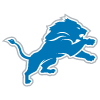
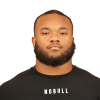
Wingo, an undersized 3-technique with mediocre career results, was surprisingly still available this late. He has strong intangibles and was frequently rotated at LSU, where he also had to deal with numerous coaching changes. He could potentially be a surprising asset as a rotational contributor.




Palmer’s size and speed could enable him to perform better in the NFL than in college. He has the potential for significant plays, although he has developed later than others.


Despite his size limitations, James was considered a potential third to fifth-round prospect, representing significant value. Although he’s most recognized for permitting the fourth-and-31 reception to Alabama, James has the ability to compete in this league.


Milton’s bazooka arm figured to make him a late-round flier, but I didn’t have him landing in New England after the Patriots took Drake Maye with the third overall pick. Some teams have toyed with the idea of turning Milton into a Logan Thomas-like TE conversion.


McLachlan has significantly evolved as a player since his Southern Utah days, transforming himself into an NFL draft pick. While he may not have the typical size for his position, his length and speed make him a viable option as a pass receiver.


Watts possesses the length to be tested as a zone corner for the Steelers, or alternatively, he could be evaluated at safety, a position he practiced at the East-West Shrine Bowl. He is a height-weight-speed prospect with an uncertain future position.


The Rams clearly are throwing numbers at the defensive line, hoping that a slew of young depth can overcome the loss of Aaron Donald. Davis is a respected team captain who made his mark at Clemson and might be able to overcome his physical shortcomings to enter the DT rotation.


Logue, a flash player for the Bulldogs who have won two championships, was often overshadowed by an abundance of talent in Athens. Despite his production being less impressive with only 1.5 sacks in over 50 college games, his exceptional length stands out.


A few years ago, McMorris gained attention with a season of four interceptions at San Diego State. He ended with a strong final year at Cal, but his average abilities may prevent him from ever becoming a starter.


Boyd may not excel as a playmaker, but his considerable size and formidable strength could offer him an opportunity to become an early-down nose tackle. He is resilient, dependable, and has excellent stamina.
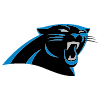
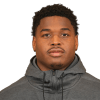
If you weigh over 300 pounds and can run a 40-yard dash in under 5.0 seconds, you’ll get drafted. Crumedy might not have outstanding performance, but his maturity and experience could provide him with an advantage when competing for a spot on Carolina’s roster.


Abraham, with his NFL heritage and impressive college performance, coupled with his great athletic prowess, fits into the category of undersized nickel CB, a type that is abundant in this class. However, he could potentially be a perfect fit for a practice-squad position in Indy.


Glover is a stereotyped developmental OT prospect who possesses average movement skills alongside outstanding length and grip strength. He demonstrated impressive finishing skills, although it was against a lesser competitive level.


Our second specialist. Reichard is extremely accurate from 50 yards in, and he delivered a clutch 52-yarder in the Rose Bowl. With the new kickoff rules, Reichard’s lack of booming leg strength might not be a problem, and playing more than half his games indoors also helps.


Grable, a converted tight end from Jacksonville State, has proven himself as a reliable left tackle over the past two years at UCF. Not only is he a skilled athlete with impressive length, but he also has the potential to be trained as a center. Despite still learning the intricacies of the O-line, his prospects are promising.

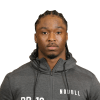
Jordan, a former sprinter, did not perform as well as expected at the combine. His smaller stature may restrict his capacity to handle a substantial load. However, he is a valuable asset for Houston’s zone-run scheme, providing a good change-up option.
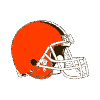

Watson has better short-area quickness and reaction skills than his range. His off-field issues and age limited his appeal, but Watson will have a chance if he stays focused.


Jerrell possesses a subtly impressive athleticism which is worth nurturing. However, he will require time to adapt to the significant leap in competition compared to what he encountered at Findlay College. Furthermore, he may not have the necessary length to play outside.
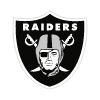

Laube gained a folk hero status at the Senior Bowl, captivating fans with his charismatic personality, agility, and exceptional pass-catching skills. He recorded 295 receiving yards against Central Michigan alone this year and has the potential to become a highly effective third-down option in the passing game.


The kickers are arriving. Karty has significantly enhanced his accuracy over his last two years and has authentic range up to the high 50s. He stands a good chance of being the top kicker in this class. The Rams are in dire need of stability in this position.


Mahogany’s tape is hilarious, watching him dispatch defenders left and right, even if that overzealous style can get him in trouble at times. He needs refinement but will land with one of the best OL coaches in the NFL and was just outside my top 100 prospects. The Lions’ strong draft continues.
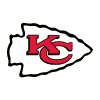

In recent years, the Chiefs have successfully selected later-round DB picks and Hadden could be their next underdog if his health or lack of deep speed doesn’t restrict him. He performed impressively last season for the Vols when needed.


Here we have our third kicker in quick succession. Little could arguably be considered the most skilled of the trio, with the ability to hit beyond 60 yards. However, his inconsistencies, even evident at the combine, could render him somewhat unreliable if he falters in high-pressure, end-game situations.


Whittington, a classic pick by Les Snead, was never a prominent figure at Texas due to injury and switching positions from running back. However, he’s a dynamic player with the drive and talent required to succeed. He’s an exciting player to develop.

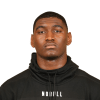
Evaluating Johnson is challenging because he hasn’t made significant progress in his development, yet he was highly valued in the program due to his resilience and dedication. His rush skill is adequate enough to warrant an opportunity.


He has played all positions except center at Washington State and USC, ironically, his short frame might necessitate a shift to center in the NFL. He would be a perfect candidate for the practice squad.

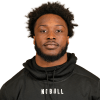
Flournoy unexpectedly attended the Senior Bowl, outperforming several corners from larger schools and consistently receiving short and intermediate passes. His speed may be underrated, but Flournoy could be nearing his peak as a prospect.


Limmer was overwhelmed a few times when matched with Texas’ massive T’Vondre Sweat in Senior Bowl one-on-ones, but Limmer is tough-minded, competitive and might be better than a few centers who were drafted before him.


I suppose if there’s a Brock Purdy-esque candidate in this class, it’s Leary. I didn’t love his tape last season, and he might have peaked as a sophomore (sound familiar?). His arm talent gives him a chance, but Leary needs to be more accurate on throws most NFL QBs make consistently.


Hardy’s return skills could be what maintains his place in the league, considering he doesn’t possess the mass and strength necessary for full time defense. However, his sub-4.4 speed is always a desirable trait for a DB.
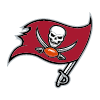

Klein, with his 55 college starts and good length, has the potential to succeed in Tampa. However, his stiffness might limit him to being only an inside blocker.
ROUND 7

This 6-foot-7, 301-pound Brit with 35-inch arms completed a 40-yard dash in 4.81 seconds during South Florida’s pro day, instantly grabbing scouts’ attention late in the process. He’s a raw talent that could potentially become an extraordinary discovery with a bit more refinement, especially due to his exceptional athletic abilities.


JJB, a perfect choice for a camp competition, is an average athlete with a bit of rigidity. However, he displayed progress during his super senior year and even scored a touchdown by running back a blocked kick in the last season.
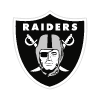

In recent years, after a long hiatus, the Air Force has had several players drafted. Taylor has the potential to succeed as either a box safety or a contributor to special teams.


Anthony progressively advanced from Shepherd College to Liberty, and finally to Ole Miss, where he secured a starting position in his fifth college season. Although he isn’t considered a top-tier athlete, his aggressive nature and football instincts enable him to make a significant impact.

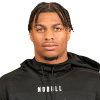
Jerry Rice’s son and Caleb Williams‘ go-to guy figured to go a few rounds higher than this, but it’s possible scouts felt there was more development needed in his game. With the Chargers, there are WR jobs open for Rice to make the roster early on.

Davis, with only one career interception dating back to 2019, does not have remarkable playmaking skills, and his size undeniably restricts his role. However, his ability to run a 40-yard dash in 4.44 seconds and his experience are noteworthy.
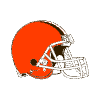

A year ago, he competed against Luther Burden from Mizzou in the season opener, where he made his only interception of that season. Harden may not be a fast runner, but he could be a good match for Cleveland.


His chances of enhancing his stock before the draft were hampered by a leg injury. Although Samac has difficulty dealing with swift interior rushers, he can dominate in the run game.
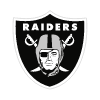

Devonshire is a quick and tenacious competitor, albeit with size constraints. Although he never started full-time in college, his ball production was impressive over the last two years.


Jurgens might need to establish himself as a center due to his lack of perfect strength or agility. He is a center who relies on both his intelligence and physical abilities, often using a bump-and-steer technique to overcome his opponents.


Bell’s athletic versatility allowed him to play as a running back at South Carolina due to injuries. However, his optimal opportunity to succeed in the league lies in being a “move” tight end, due to his smaller physique.


Two years ago, he was playing at Southwestern Assemblies of God, so the jump to NFL will significantly increase his competition. However, his aggressive and feisty style of play is what makes him an interesting player.

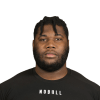
Thomas was a high school tight end who successfully transitioned to left tackle in college. Most likely, this is the position he will be tested in for the NFL. While he still needs refinement, he has enough potential that it’s worth investing in him at this point.


While Laulu may require a year to build strength and mass, his superior length and agile athleticism are valuable assets.


At 26 years old, Vele is one of the older prospects in this class due to spending two years on an LDS mission. However, his 6-foot-4 height, long arms, sub-4.5 speed, and jumping ability make him a potential jump-ball target to be developed.

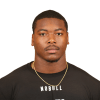
Identifying the appropriate technique for Cole is crucial. Despite not having the physical bulk for full-time interior duties, his unique characteristics, particularly his length, make him an exciting choice for Round 7.


Lee is highly mobile, effortlessly reaching the second level, however, he is unlikely to withstand against superior power.


The ex-Wyoming star excelled in his final season with the Trojans, achieving 11 tackles for loss and causing four forced fumbles. However, his lackluster testing results negatively impacted his stock. He’s known for playing until the whistle and might succeed as a rotational end.


Ezirim, a converted D-lineman with two years of offensive line play experience, possesses an impressive mass that could be beneficial if the Saints take time with his development.

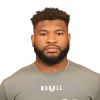
Barrett’s short stature may be a challenge as a punishing hitter, but his aggressive and inspiring style of play compensifies for his lack of height.


Washington’s small stature may have caused some to overlook him, particularly after he ran the 40 in the 4.5 range. However, his significant contributions on offense and special teams should not be ignored. Washington could be the kind of player who manages to stay in the league.
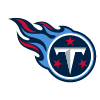

Williams, a rather tall and rangy athlete who has played more as a deep safety than in the box, will be tested as a linebacker. His unique size and skill set could potentially make him a dark horse.

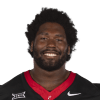
Briggs may be a shorter defensive lineman, but his quickness in gap-shooting can assist him greatly. He displays maturity and a readiness for professional play, but he will need to stand out in the densely populated defensive line group in Cleveland.

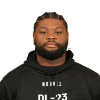
Rogers may appear blocky and rigid, but his ability to resist movement in the run game indicates potential to succeed as a run-stopping interior defender.


If it’s me, I am drafting Pratt before both Jordan Travis and Devin Leary, and the Packers aren’t afraid to keep investing in QB talents. From the Green Wave to Green Bay, Pratt is good enough to push Sean Clifford to the side and become Jordan Love‘s understudy — perhaps as soon as this year — with his cool, calm, patient approach and quality accuracy.
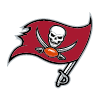
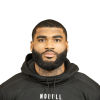
Culp surprised some when he ran a 40-yard dash in 4.47 seconds. However, his weight of 230 pounds is likely to restrict his role significantly. Nevertheless, Culp showed progress each season in college and possesses untapped potential as an H-back.

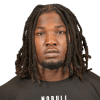
Harris, who is a spirited rusher, may always find it challenging to compete against quality length. However, his never-give-up attitude often frustrates his opponents.


The product of Holy Cross primarily played as a right guard in college, but has recently been training to be a center in the NFL. This versatility could be the key to securing a place as a backup or practice squad player in Kansas City.

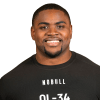
Last year, he was the starting left tackle for Michigan, implying his skills. However, the Texans introduced Henderson as a guard, a position he primarily played at Arizona State in the past. His height, agility, and playing style make him a stronger candidate than most for the seventh round.


Kane established himself as a dependable starter at Purdue, gaining recognition for his strong tackling ability and forcing three fumbles over a two-year period. However, his deficient ball skills somewhat diminish his attractiveness as a Defensive Back.

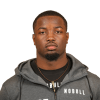
Bethune has been instrumental in setting the tone for UCF and FSU defenses over the recent seasons. His limited reach may pose a problem, but his coverage skills are commendable and he can deliver hard hits. He might just need to bide his time to seize his opportunity.
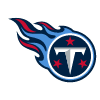

Harrell, with his broad frame and rush skills, embodies the alpha-dog mentality of a linebacker. He showcased his superb abilities in the national championship game. He has the potential to be a unique sub-package defender with a specialized role.


Jim Harbaugh’s Michigan team has another player, Johnson, who although not often highlighted in their run-heavy system, established himself as a blocker and sporadic big-play receiver. Despite inconsistent hands, Johnson has potential to establish himself in L.A.

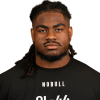
Leveston is a hulking college left tackle who might be moved to the right side, or perhaps to guard. I suspect Cooper Beebe helped make Leveston, an older prospect, look better at times, but he’s experienced enough to find a job in the league.

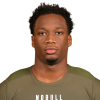
King’s name may be found in some August mock drafts, but his standing steadily declined as he failed to live up to his 2022 performance, struggled with athletic tests for his size, and lost some Senior Bowl duels. However, taking a chance on King in the seventh round is well worth the minor risk.


Gargiulo, a transfer from Yale, has experience in center, guard and tackle positions, though he excels when stationed inside. He is intelligent, competitive, and possesses a long reach.


Key’s length for a DB is quite intriguing and he arguably performed well for Bama after transferring from UAB. However, his limited long speed might restrict his role to box-safety duties in the NFL.



